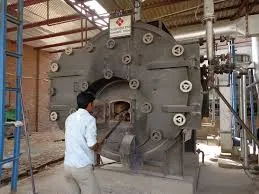
أكتوبر . 04, 2024 06:06 Back to list
cost of steam boiler replacement
The Cost of Steam Boiler Replacement Key Considerations and Implications
Steam boilers are crucial components in various industries, providing the steam necessary for processes such as heating, sterilization, and power generation. However, like any mechanical system, they have a finite lifespan and may require replacement over time due to wear and tear, efficiency concerns, or changes in production needs. This article explores the costs associated with steam boiler replacement and the factors that influence these expenses.
Understanding Replacement Costs
The cost of replacing a steam boiler can vary significantly based on several factors, primarily the type of boiler, its capacity, and the complexity of installation. On average, the total expenses can range from $10,000 to over $200,000. This figure encompasses the purchase price of the new boiler, installation costs, equipment modifications, and potential downtime during the transition.
Factors Influencing Costs
1. Type of Boiler There are various types of steam boilers, including fire-tube, water-tube, electric, and others. Fire-tube boilers tend to be less expensive than water-tube models, which are often used for high-pressure applications. Additionally, specialized boilers designed for specific industrial processes can carry a premium price tag.
2. Boiler Capacity The size and capacity of the boiler directly affect the unit price. A larger boiler designed to meet higher steam demands will increase the overall cost. Companies must carefully assess their steam requirements to avoid over-investing in capacity that exceeds their operational needs.
cost of steam boiler replacement

3. Installation Complexity The condition of the existing infrastructure can also impact replacement costs. In cases where substantial renovations are required—such as upgrades to the steam distribution system or modifications to the facility to accommodate a new boiler—installation costs can rise significantly.
4. Regulatory Compliance Stringent regulations regarding emissions and energy efficiency can lead to added costs. Ensuring that the new boiler complies with local environmental standards may necessitate the incorporation of advanced technologies, such as lowNOx burners, which can increase upfront expenses but reduce long-term operational costs.
5. Long-term Efficiency While the initial replacement cost is a crucial factor, the long-term operational expenses should also be taken into account. Investing in a high-efficiency boiler may present a higher upfront cost but can result in substantial savings on fuel and maintenance over its lifespan.
Financial Incentives and Considerations
Companies should also explore potential financial incentives, such as tax credits or rebates for energy-efficient equipment, which can alleviate some of the upfront costs associated with boiler replacement. Additionally, budgeting for the life cycle of the boiler, including routine maintenance and potential repairs, is essential for an accurate financial forecast.
Conclusion
Replacing a steam boiler is a significant investment that requires careful consideration of various factors impacting costs. By conducting a thorough assessment of the existing system and evaluating different boiler options, organizations can make informed decisions that balance upfront expenses with long-term operational efficiency. Ultimately, investing in the right steam boiler will enhance productivity, reduce energy consumption, and improve overall environmental performance, making it a pivotal aspect of industrial sustainability.
-
High-Efficiency Commercial Oil Fired Steam Boiler for Industry
NewsJul.30,2025
-
High-Efficiency Biomass Fired Thermal Oil Boiler Solutions
NewsJul.30,2025
-
High Efficiency Gas Fired Thermal Oil Boiler for Industrial Heating
NewsJul.29,2025
-
High-Efficiency Gas Fired Hot Water Boiler for Sale – Reliable & Affordable
NewsJul.29,2025
-
High Efficiency Biomass Fired Hot Water Boiler for Industrial and Commercial Use
NewsJul.29,2025
-
High-Efficiency Biomass Fired Hot Water Boiler for Industrial Use
NewsJul.28,2025
Related PRODUCTS






















